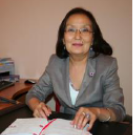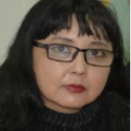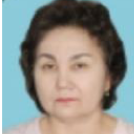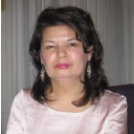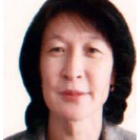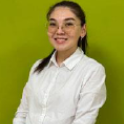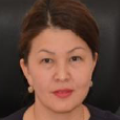International Journal of Modern Education and Computer Science (IJMECS)
IJMECS Vol. 16, No. 5, 8 Oct. 2024
Cover page and Table of Contents: PDF (size: 753KB)
Innovative Approaches to Higher Education: Blended Learning in Kazakhstan
PDF (753KB), PP.33-49
Views: 0 Downloads: 0
Author(s)
Index Terms
blended learning, facilitation methods, facilitation sessions, organization of the educational process
Abstract
The research problem is based on the study of the possibilities of expanding methodological approaches, educational technologies, and educational programs for the implementation of blended learning and increasing the level of its effectiveness in the educational system of Kazakhstan. This study aims to identify the best conditions for implementing blended learning that would meet the technical capabilities of the university, the educational programs, and the interests and needs of all participants of the educational process. For this, the following data collection methods were used: online surveys, quantitative and qualitative analyses, and facilitation tools, such as World Café, Future Search, ranking, and Spearman's correlation analysis. The results show that more than half of the students (58%) and teachers (65%) were not satisfied with the existing structure of blended learning at the university. This research suggests involving all participants in the educating process when adopting the blended mode of learning to enhance the efficacy of the blended learning program. The practical significance of this research lies in its determination of the optimal conditions for implementing blended learning in the university programs of Kazakhstan. The engagement of all stakeholders in the Learning pathway in decision-making regarding hybrid education, taking into account the technical capabilities of universities and the individual needs of students and instructors, aims not only to address current issues but also to enhance the quality of education and prepare graduates to meet the demands of the contemporary labor market. Such an approach to research and innovation implementation in Kazakhstan's education could foster the development of more flexible, adaptive, and effective educational systems that meet the requirements of the modern world.
Cite This Paper
Aliya Mombek, Botagoz Baymuhambetova, Sholpan Kulmanova, Galina Kolesnikova, Gulnara Kuzbakova, Bota Suleimenova, Samal Tauyekel, Elmira Nauryzbayeva, "Innovative Approaches to Higher Education: Blended Learning in Kazakhstan", International Journal of Modern Education and Computer Science(IJMECS), Vol.16, No.5, pp. 33-49, 2024. DOI:10.5815/ijmecs.2024.05.03
Reference
[1]R. L. G. Llemit, "Finding a new path amid the pandemic," SunStar DAVAO. [Online]. Available: https://www.sunstar.com.ph/article/1874519/Davao/Local-News/Finding-a-new-path-amid-the-pandemi
[2]C. Dziuban, C. R. Graham, P. D. Moskal, A. Norberg, and N. Sicilia, "Blended learning: The new normal and emerging technologies," Int. J. Educ. Technol. High. Educ., vol. 15, pp. 1–16, 2018. doi: 10.1186/s41239-017-0087-5
[3]K. OSullivan, "New research shows online and blended learning 'better than traditional instruction'," FUTURESCOT. [Online]. Available: https://futurescot.com/new-research-shows-online-and-blended-learning-better-than-traditional-instruct/
[4]S. Meena and S. Vasantha, "Effectiveness of blended learning in higher education," J. Adv. Res. Dyn. Control Syst., vol. 10, pp. 1894–1897, 2018.
[5]H. Atef and M. Medhat, "Blended learning possibilities in enhancing education, training and development in developing countries: A case study in graphic design courses," TEM J., vol. 4, no. 4, pp. 358–365, 2015.
[6]M. Nande and W. A. Irman, "Penerapan model pembelajaran blended learning dalam meningkatkan hasil belajar siswa sekolah menengah kejuruan," Edukatif: J. Ilmu Pendidikan, vol. 3, no. 1, pp. 180–187, 2021. doi: 10.31004/edukatif.v3i1.24
[7]N. Rananda, A. Hakim, and M. Junus, "Video-assisted blended learning on cognitive learning outcomes of junior high school students on waves and sound materials," J. Pendidik. Fis. dan Teknol., vol. 8, no. 2, pp. 253–261, 2022. doi: 10.29303/jpft.v8i2.3899
[8]H. Singh, "Building effective blended learning programs," Educ. Technol., vol. 43, no. 6, pp. 15–23, 2021. doi: 10.4018/978-1-7998-7607-6.ch002
[9]T. Ooi, E. Balan, and M. Saeed, "Teacher readiness and perception of blended learning Jamshedpur Research Review," Discip. Res. J., vol. 5, pp. 8–16, 2020.
[10]S. Simangunsong and I. Trisna, "Analisa kognitif model blended learning dengan pendekatan kalkulus dasar," J. Pendidik. Fis. dan Teknol., vol. 7, no. 1, pp. 11–16, 2021. doi: 10.29303/jpft.v7i1.2580
[11]M. Indayani, A. J. Hunusalela, and E. Mursalin, "Pengaruh penerapan model pembelajaran blended learning terhadap hasil belajar ipa siswa SMP," J. Kajian Inovasi dan Aplikasi Pendidikan Fisika, vol. 7, no. 2, pp. 359–365, 2021. doi: 10.31764/orbita.v7i2.5830
[12]D. Lecic, A. Kupusinac, S. Rouhani, and B. Kuzmanovic, "Blended Learning at Universities," in The 10th Int. Conf. on Virtual Learning (ICVL 2015). London: Thomson Reuters, 2016, pp. 142–146.
[13]A. Szadziewska and J. Kujawski, "Advantages and disadvantages of the blended-learning method used in the educational process at the Faculty of Management at the University of Gdansk, in the opinion of undergraduate students," in ICERI2017 Proceedings, L. Gómez Chova, A. López Martínez, and I. Candel Torres, Eds. New York: IATED, 2017, pp. 3938–3946.
[14]M. Nikiforova, "Blended learning practices in Russian higher education: Benefits, challenges, perspectives," in SHS Web of Conferences, vol. 99. Les Ulis: EDP Sciences, 2021, p. 01005. doi: 10.1051/shsconf/20219901005
[15]S. Ginting, M. Tjandra, and E. Wianto, "Blended learning: Post pandemic solutions," Aksara: J. Ilmu Pendidikan Nonformal, vol. 7, no. 2, pp. 425–438, 2021. doi: 10.37905/aksara.7.2.425-438.2021
[16]F. Sartika, M. Ritonga, A. Lahmi, A. Rasyid, and S. R. Febriani, "Online learning in the low internet area, planning, strategies and problems faced by students during the Covid-19 period," in Artificial Intelligence for COVID-19, D. Oliva, S. A. Hassan, and A. Mohamed, Eds. Cham: Springer, 2021, pp. 413–421. doi: 10.1007/978-3-030-69744-0
[17]T. Jowsey, G. Foster, P. Cooper-Ioelu, and S. Jacobs, "Blended learning via distance in pre-registration nursing education: A scoping review," Nurse Educ. Pract., vol. 44, p. 102775, 2020. doi: 10.1016/j.nepr.2020.102775
[18]A. Kaliaskarova, T. Zhundybaeva, M. B. Triyono, and G. K. Kassymova, “Blended learning as an effective method for school and university teachers of Kazakhstan,” Jurnal Pendidikan Vokasi, vol. 12, no. 3, pp. 265–272, 2022. doi: 10.21831/jpv.v12i3.48115
[19]G. Tussupbekova, K. L. Malone, J. Helmer, G. Namyssova, M. Abdrakhmanova, F. Polat, and Z. Kataeva, “Graduate students’ experiences in a blended learning program in Kazakhstan: A mixed-method study employing interaction equivalency theorem,” Contemp. Educ. Technol., vol. 14, no. 4, p. ep386, 2022. doi: 10.30935/cedtech/12398
[20]S. Başaran, "Investigating university students' acceptance of blended learning during COVID-19 pandemic," Int. Technol. Educ. Manage. Symp. (ITJEMAST), vol. 12. p. 12A13J, 2021. doi: 10.6084/m9.figshare.17602388
[21]D. Oza and V. Trivedi, "Integrating blended learning in primary education: Concerns and considerations," J. High. Educ., vol. 3, no. 2, pp. 424–438, 2021. doi: 10.37867/TE130233
[22]N. Khoiroh, "Pengaruh model Pembelajaran blended learning dan motivasi belajar terhadap hasil belajar siswa," J. Penelit. Ilmu Pendidik., vol. 10, no. 2, pp. 97–110, 2017. doi: 10.21831/jpipfip.v10i2.13986
[23]D. N. Wardani, A. J. E. Toenlioe, and A. Wedi, "Daya tarik pembelajaran di era 21 dengan blended learning," J. Kajian Teknol. Pendidik. (JKTP), vol. 1, pp. 13–18, 2018.
[24]M. Fleurbaey, O. Bouin, M. L. Salles-Djelic, and H. Nowotny, A manifesto for social progress: Ideas for a better society. Cambridge: Cambridge Univ. Press, 2018.
[25]L. Starkey, "A review of research exploring teacher preparation for the digital age," Cambridge J. Educ., vol. 50, no. 1, pp. 37–56, 2020.
[26]A. Gepp and K. Kumar, "How to improve teaching using blended learning," in Theoretical and Practical Approaches to Innovation in Higher Education, L. N. Makewa, Ed. London: IGI Global, 2020, pp. 80–90. doi: 10.4018/978-1-7998-1662-1.ch005
[27]S. Ramalingam, M. M. Yunus, and H. Hashim, "Blended learning strategies for sustainable English as second language education: A systematic review," Sustainability, vol. 14, no. 13, p. 8051, 2022. doi: 10.3390/su14138051
[28]K. C. Aquino and S. BuShell, "Device usage and accessible technology needs for post-traditional students in the e-learning environment," J. Contin. High. Educ., vol. 68, no. 2, pp. 101–116, 2020. doi: 10.1080/07377363.2020.1759313
[29]C.-H. Lin and Y.-Y. Chang, "A progressive three-stage teaching method using interactive classroom activities to improve learning motivation in computer networking courses," Sustainability, vol. 14, no. 9, p. 5191, 2022. doi: 10.3390/su14095191
[30]M. N. Islam, S. Sumarmi, A. K. Putra, P. Sugiyati, and S. Salsabilah, "The effect of interactive blended-problem based learning assisted virtual classroom on critical thinking skills of students of the society era 5.0," J. Geografi Gea, vol. 21, no. 2, pp. 135–146, 2021.
[31]P. A. S. Lestari and G. Gunawan, "The impact of Covid-19 pandemic on learning implementation of primary and secondary school levels," Indonesian J. Elem. Child Educ., vol. 1, no. 2, pp. 58–63, 2020. [Online]. Available: http://journal.publication-center.com/index.php/ijece/article/view/141
[32]T. Tabroni, M. Syukur, and I. Indrayani, "Penerapan model pembelajaran problem based learning untuk meningkatkan hasil belajar siswa pada mata pelajaran ilmu pengetahuan sosial materi bentuk-bentuk mobilitas sosial kelas viii-b smp negeri 4 rokan iv koto kab. rokan hulu riau," J. Pemikiran Pengemb. Pembelajaran, vol. 4, no. 2, pp. 261–266, 2022. [Online]. Available: http://ejournal-jp3.com/index.php/Pendidikan/article/view/409
[33]M. Makhrus, A. Abtokhi, and Z. Hidayatullah, "Learning case study in the pandemic covid-19: Learning targets, needs analysis, obstacles, and solutions," in International Conference on Engineering, Technology and Social Science (ICONETOS 2020), S. Senjana et al., Eds., Dordrecht: Atlantis Press, 2021, pp. 788–793. doi: 10.2991/-assehr.k.210421.11
[34]Y. Wei, Y. Shi, H. Yang, and J. Liu, "Blended learning versus traditional learning: A study of students’ learning achievements and academic press," in 2017 International Symposium on Educational Technology (ISET), New York: IEEE, 2017, pp. 219–223. doi: 10.1109/iset.2017.57
[35]K. Galimova, Z. Kireeva, R. Khasanova, and V. Ivanov, "Blended Learning: Problems and Prospects," Eur. Proc. Soc. Behav. Sci., vol. 93, 2020. doi: 10.15405/epsbs
[36]M. Вarak, "Science teacher education in the twenty-first century: A pedagogical framework for technology-integrated social constructivism," Res. Sci. Educ., vol. 47, no. 2, pp. 283–303, 2017. doi: 10.1007/s11165-015-9501-y
[37]A. Alammary, "Blended learning models for introductory programming courses: A systematic review," PLoS ONE, vol. 14, no. 9, p. e0221765, 2019. doi: 10.1371/journal.pone.0221765
[38]U. Cakiroglu, "Comparison of novice programmers’ performances: Blended versus face-to-face," Turk. Online J. Distance Educ., vol. 13, no. 3, pp. 135–151, 2012.
[39]L. C. Medina, "Blended learning: Deficits and prospects in higher education," Australas. J. Educ. Technol., vol. 34, no. 1, pp. 42–56, 2017. doi: 10.14742/ajet.3100
[40]M. Sari, A. F. Lufri, and E. Barlian, "The model development of blended learning by using Facebook (mbl-fb) at teacher training and educational college in the institutional of Islamic colleges," Appl. Sci. Technol., vol. 2, no. 1, pp. 85–91, 2018.
[41]I. S. Nikmawati, Korelasi Gaya Belajar Siswa Kelas VII dengan Hasil Belajar Mata Pelajaran Sejarah Kebudayaan Islam di Sekolah Menengah Pertama (SMP) Islam Durenan Trenggalek. IAIN Tulungagung, 2014.
[42]N. Peimani and H. Kamalipour, "Online education in the post COVID-19 era: Students’ perception and learning experience," Educ. Sci., vol. 11, no. 10, p. 633, 2021. doi: 10.3390/educsci11100633
[43]E. Zamroni, B. B. Lasan, and N. Hidayah, "Blended learning based on problem based learning to improve critical thinking ability of prospective counselors," in Journal of Physics: Conference Series, vol. 1539, No. 1. Les Ulis: IOP Publishing, 2020, p. 012039. doi: 10.1088/1742-6596/1539/1/012039
[44]K. Yuan, A. Aftoni, and Ö. Çobanoğlu, "The Effect of problem-based learning model and blended learning model to metacognitive awareness as a reflection towards a new normal era," J. Pendidikan Teknol. Kejuruan, vol. 26, no. 2, pp. 183–188, 2020. doi: 10.21831/jptk.v26i2.32783
[45]B. Fitri Rahmawati, Zidni, and S. Suhupawati, "Learning by Google Classroom in students’ perception," in Journal of Physics: Conference Series, vol. 1539, No. 1. Les Ulis: IOP Publishing, 2020, p. 012048. doi: 10.1088/1742-6596/1539/1/012048
[46]T. Leiwakabessy, "Adaptasi model pembelajaran blended learning pada lembaga pendidikan anak usia dini masa kebiasaan baru (new normal)," J. Patita, vol. 8, no. 1, pp. 20–30, 2021. [Online]. Available: https://pauddikmasmaluku.id/jurnalpatita/index.php/beranda/article/view/4
[47]J. I. Pichardo, E. F. López-Medina, O. Mancha-Cáceres, I. González-Enríquez, A. Hernández-Melián, M. Blázquez-Rodríguez, V. Jiménez, M. Logares, D. Carabantes-Alarcon, M. Ramos-Toro, E. Isorna, M. Cornejo-Valle, and O. Borrás-Gené, "Students and teachers using Mentimeter: Technological innovation to face the challenges of the COVID-19 pandemic and post-pandemic in higher education," Educ. Sci., vol. 11, no. 11, p. 667, 2021. doi: 10.3390/educsci11110667
[48]K. N. Hendrie Kupczyszyn and M. D. C. Bastacini, "Self-regulation in University students: Learning strategies, motivation, and emotions," Rev. Educ., vol. 44, pp. 327–344, 2020. doi: 10.15517/revedu.v44i1.37713
[49]J. C. Y. Sun, S. J. Yu, and C. H. Chao, "Effects of intelligent feedback on online learners’ engagement and cognitive load: The case of research ethics education," Educ. Psychol., vol. 39, no. 10, pp. 1293–1310, 2019. doi: 10.1080/01443410.2018.1527291
[50]D. Dumulescu, I. Pop-Păcurar, and C. V. Necula, "Learning design for future higher-education–insights from the time of COVID-19," Front. Psychol., vol. 12, p. 2843, 2021. doi: 10.3389/fpsyg.2021.647948
[51]L. Deslauriers, L. S. McCarty, K. Miller, K. Callaghan, and G. Kestin, "Measuring actual learning versus feeling of learning in response to being actively engaged in the classroom," Proc. Natl. Acad. Sci. U.S.A., vol. 116, no. 39, pp. 19251–19257, 2019. doi: 10.1073/pnas.1821936116
[52]A. Harerimana and N. G. Mtshali, "Nursing students’ perceptions and expectations regarding the use of technology in nursing education," Afr. J. Nurs. Midwifery, vol. 21, no. 2, pp. 1–20, 2019. doi: 10.25159/2520-5293/5103
[53]W. Strielkowski and J. Wang, "An introduction: COVID-19 pandemic and academic leadership," in 6th Int. Conf. on Social, economic, and academic leadership (ICSEAL-6-2019), Amsterdam: Atlantis Press, 2020, pp. 1–4.
[54]E. Lekalakala-Mokgele, "Facilitation as a teaching strategy: experiences of facilitators," Curationis, vol. 29, no. 3, pp. 61–69, 2006. doi: 10.4102/curationis.v29i3.1101
[55]I. S. Nechitailo, N. Dymar, M. Biriukova, and N. Liashenko., "Distance educational technologies as a facilitator of students’ cognitive flexibility: Risks and prospects," Laplage em Revista, vol. 7, pp. 396–402, 2021. doi: 10.24115/S2446-6220202173D1731p.396-402
[56]T. G. Bondarenko and E. A. Isaeva, "Facilitation of educational process in a university (On the example of master's programme “Innovative Bank Strategies and Technologies”)," Int. J. Environ. Sci. Educ., vol. 11, no. 18, pp. 12551–12565, 2016.
[57]A. V. Fisun, "The phenomenon of facilitation in the methodological work of teachers of educational institutions of I-II level of accreditation," Pedagogy Creative Personality Formation Higher Secondary Schools, vol. 53, pp. 341–346, 2017.
[58]Y. V. Tsekhmister, "Organizational pedagogical conditions for activity of lyceum in the structure of higher school," in European Vector of Contemporary Psychology, Pedagogy, and Social Sciences: Experience of Ukraine and the Republic of Poland. Baltija Publishing, 2018, pp. 384–407.
[59]E. Blondeel, P. Everaert, and E. Opdecam, "And then there was COVID-19: Do the benefits of cooperative learning disappear when switching to online education?" Sustainability, vol. 13, no. 21, p. 12168, 2021. doi: 10.3390/su132112168
[60]J. Brown and D. Isaacs, The World Café. Oakland: Berrett-Koehler Publishers Inc., 2005.
[61]M. R. Weisbord, Discovering common ground: How future search conferences bring people together to achieve breakthrough innovation, empowerment, shared vision, and collaborative action. Oakland: Berrett-Koehler Publishers, Inc., 1992.
[62]V. Braun, V. Clarke, E. Boulton, L. Davey, and C. McEvoy, "The online survey as a qualitative research tool," Int. J. Soc. Res. Methodol., vol. 24, no. 6, pp. 641-654, 2021. doi: 10.1080/13645579.2020.1805550
[63]L. Myers and M. J. Sirois, "Spearman correlation coefficients, differences between," in Encyclopedia of Statistical Sciences, vol. 12, Wiley StatsRef, 2004, art no. ess5050. doi: 10.1002/0471667196.ess5050.pub2
[64]N. B. Ayub, M. H. B. Ahsan, and N. S. B. Azman, "Factors determining blended learning receptiveness among Malaysian academicians," Labuan Bull. Int. Bus. Finance (LBIBF), vol. 19, no. 1, pp. 118–133, 2021. doi: 10.51200/lbibf.v19i1.2938
[65]R. Oktova and L. Rahmi, "Developing blended learning with the use of i-learn in block 1.A (introduction to midwifery education)," in The 3rd Int. Conf. on Educ. Dev. and Quality Assurance (ICED-QA 2020), Dordrecht: Atlantis Press, 2021, pp. 474–480. doi: 10.2991/assehr.k.210202.083
[66]N. N. Kuzmina, E. G. Korotkova, and S. M. Kolova, "Implementing E-learning in the system of engineering students training," in 2021 Int. Conf. on Quality Management, Transport and Information Security, Information Technologies (IT&QM&IS), New Jersey: IEEE, 2021, pp. 818–823. doi: 10.1109/ITQMIS53292.2021.9642815
[67]G. Namyssova, G. Tussupbekova, J. Helmer, K. Malone, M. Afzal, and D. Jonbekova, "Challenges and benefits of blended learning in higher education," Int. J. Teach. Educ. Sci., vol. 2, pp. 22–31, 2019.
[68]A. Kumar, R. Krishnamurthi, S. Bhatia, K. Kaushik, N. J. Ahuja, A. Nayyar, and M. Masud, "Blended learning tools and practices: A comprehensive analysis," IEEE Access, vol. 9, pp. 85151–85197, 2021. doi: 10.1109/ACCESS.2021.3085844
[69]H. Handoko and W. Waskito, Blended learning: Konsep dan Penerapannya. Lemb. dan Pengemb. Teknol. Inf. dan Komunikasi (LPTIK) Univ. Andalas, 2018.
[70]M. Binu, "The role of feedback in classroom instruction," J. ELTIF, vol. 5, no. 4, pp. 7–11, 2020.
[71]R. Pekrun, "Feelings and emotions in the learning process," Learn. Instr., vol. 15, no. 5, pp. 497–506, 2005. doi: 10.1016/j.learninstruc.2005.07.014
[72]C. Evans, "Making sense of assessment feedback in higher education," Rev. Educ. Res., vol. 83, no. 1, pp. 70–120, 2013. doi: 10.3102/0034654312474350
[73]L. Perante, E. M. Solmiano, J. P. Lunesto, J. A. M. Malicdem, J. Malaca, and J. Tus, "Mag-Aral ay Di ‘Biro: A phenomenological study on the lived experiences of the students on blended learning amidst COVID-19," IJARIIE, vol. 7, pp. 735–750, 2021. doi: 10.6084/m9.figshare.13717864.v
[74]A. Bravo, N. B. Buenaflor, J. I. Baloloy, L. Guarte, A. M. Osinaga, A. Salartin, and J. Tus, "Amidst the COVID-19 pandemic: The job burnout and job satisfaction of public school teachers in the Philippines," Int. J. of Adv. Res. and Innov. Ideas Educ., vol. 7, no. 3, pp. 2979–2993, 2021. doi: 10.6084/m9.figshare.14832399.v1
[75]L. Alabdulkarim, "University health sciences students rating for a blended learning course framework," Saudi J. of Biol. Sci., vol. 28, no. 9, pp. 5379–5385, 2021. doi: 10.1016/j.sjbs.2021.05.059
[76]M. Taylor, N. Vaughan, S. K. Ghani, S. Atas, M. Fairbrother, "Looking back and looking forward: A glimpse of blended learning in higher education from 2007-2017," Int. J. Adult Vocat. Educ. Technol. (IJAVET), vol. 9, no. 1, pp. 1–14, 2018. doi: 10.4018/IJAVET.2018010101
[77]R. Wong, "Basis psychological needs of students in blended learning," Interactive Learn. Environ., vol. 30, no. 6, pp. 984–998, 2019. doi: 10.1080/10494820.2019.1703010
[78]A. V. Alvarez Jr., "Learning from the problems and challenges in blended learning: Basis for faculty development and programme enhancement," Asian J. Distance Educ., vol. 15, no. 2, pp. 112–132, 2020. doi: 10.5281/zenodo.429263
[79]S. N. Gorycheva, E. Y. Ignateva, and O. B. Dautova, "Structural And content characteristic of didactic competency of a modern educator," in Proc. European Proceedings of Social and Behavioural Sciences, vol. 87, pp. 658–666, European Publisher, 2020. doi: 10.15405/epsbs.2020.08.02.86
[80]D. S. Kirupainayagam and J. Sutha, "Technology facilitation on inclusive learning; Higher education institutions in Sri Lanka," Int. J. Educ. Manage., vol. 36, no. 4, pp. 441–469, 2021. doi: 10.1108/IJEM-02-2020-0048
[81]K. Löhr, M. Weinhardt, and S. Sieber, "The 'World Café' as a participatory method for collecting qualitative data," Int. J. Qual. Methods, vol. 19, 1609406920916976, 2020. doi: 10.1177/1609406920916976
[82]R. Aldred, "From community participation to organizational therapy? World Café and Appreciative Inquiry as research methods," Commun. Dev. J., vol. 46, no. 1, pp. 57–71, 2011. doi: 10.1093/cdj/bsp039
[83]A. V. Kutuzov, "Optimization of the educational process as a pedagogical problem," Humanit. Vector. Ser.: Pedag. Psychol., no. 1, pp. 18–23, 2015.
[84]W. Abdullah, "Model blended learning dalam meningkatkan efektivitas pembelajaran," Fikrotun: J. Ilm. Pendidik. Islam, vol. 7, no. 1, pp. 855–866, 2018. doi: 10.32806/jf.v7i1.3169
[85]A. Arqam, "Kompetensi profesional guru: Keterampilan dasar mengajar," in J. Peqguruang: Conf. Ser., vol. 1, no. 2, pp. 1–8. Lembaga Penelitian dan Pengabdian Masyarakat Universitas Al Asyariah Mandar, 2019. [Online]. Available: http://repository.iainpare.ac.id/1136/
[86]N. K. K. Ummah and H. N. Fauziah, "Penerapan kompetensi profesional guru (keterampilan dasar mengajar) pada pembelajaran tematik kelas III di MI Al-Azhar madiun," ADAPTIVIA: Prosiding Tahunan Pembelajaran di Madrasah Ibtidaiyah dan Sederajat, pp. 295–308, 2021. [Online]. Available: https://prosiding.iainponorogo.ac.id/index.php/adaptivia/article/view/377.
